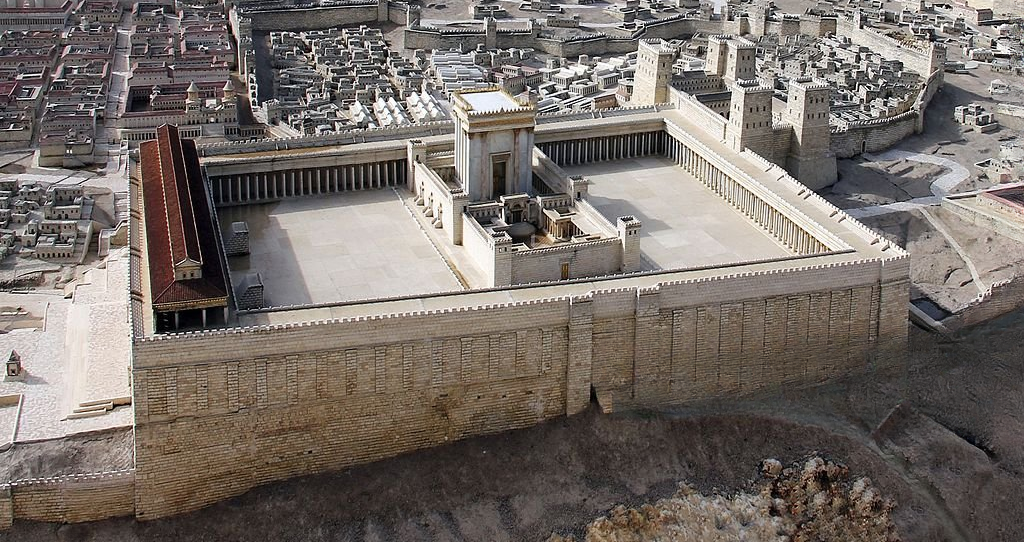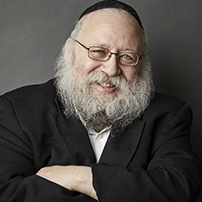
Isaac’s Three Wells
The Patriarch Isaac engaged in digging wells. The Torah, in this week’s parsha, recounts how the first two wells he dug were challenged by the Philistines. The first well he named appropriately “Eisek-Challenge” and the second one he named “Sitna-Accusation.” The third well, however, was not challenged and was appropriately named, Rechovos-Wide Spaces,” because “Now G-d will grant us open spaces, we can be fruitful in the land.”
The question has been raised:
What is the significance of knowing that Isaac was a well digger and that his third project remained unchallenged while his first two projects did not succeed.
The answer is that everything that happened to the Patriarchs was a portent of the future happenings with their children, the Jewish people. What did the digging of these three wells predict about the future?
Nachmanides and other commentators explain that these three wells that Isaac dug represent the three Holy Temples. The first two Temples were destroyed just as the ownership of the first two wells was challenged by the Philistines. But the Third Temple, to be built by Moshiach, will never be destroyed just as the third well was not challenged and remained in Isaac’s possession.
The Destruction of the Two Holy Temples
The question we can ask, why were the first two Temples destroyed and what is the guarantee that the third Temple will endure forever?
According to Biblical and Talmudic sources the first Temple was destroyed primarily because of the sin of Idolatry and the Second Temple was destroyed because of the division within the Jewish community to the point of senseless hatred.
When Moshiach comes, the world will be permeated with the presence of G-d. That will obviously remove the possibility for the worship of other gods. In addition, with the heightened awareness of G-d’s presence in our lives all hatred and division will evaporate. What separates us and causes enmity is the focus on our material and physical interests. When Moshiach comes, those interests will be subordinated to the will of the soul which we all share and which unifies all of us.
Two Scenarios
One can raise a question on the above:
There are actually two scenarios for the construction of the third Temple. According to some sources, codified by Maimonides, Moshiach will spearhead the building of the third Holy Temple. However, other sources state that the Third Temple will descend “pre-fabricated” from on High.
One of the ways the discrepancy between these two versions is reconciled is based on the Talmud’s description of two scenarios for Moshiach’s coming to usher in the Final Redemption. The first scenario is that Moshiach will come when we fully merit the Redemption because of our fidelity to the teachings of the Torah. When that happens, Moshiach’s coming will: a) be accelerated and b) occur in a miraculous fashion.
The other scenario is that Moshiach will redeem us even when we do not merit his coming. Despite our unworthiness G-d will bring the Redemption through the efforts of Moshiach at its designated time and in a natural fashion.
If Moshiach’s coming will follow the first scenario then the Bais Hamikdash will descend from on High in a miraculous fashion. If, on the other hand, Moshiach’s coming will not be because of our behavior but rather in spite of it, the third Bais Hamikdash will be built by us, under the direction of Moshiach, in a totally natural fashion.
Based on the premise that Moshiach’s building the Bais Hamikdash is predicated on the scenario that we are lacking merit, how can we assume that the third Bais Hamikdash will endure forever? Wouldn’t our lack of worthiness create the potential for the Bais Hamikdash to be destroyed once more?
The answer is twofold:
Both Scenarios True
First, the Rebbe finds another way of reconciling the two scenarios for the construction of the third Bais Hamikdash:
Initially, Moshiach will build it. However, with Moshiach’s efforts at spreading
G-dly knowledge and refining the people, we will eventually become meritorious, at which point the heavenly Temple will descend and garb itself within the human structure.
Moshiach’s Uniqueness
Second, although the people may be unworthy, Moshiach is not. The Talmud states that the handiwork of Moses and King David were never destroyed. Their holiness was so profound that their handiwork would endure forever. Moshiach, likewise, will imbue his handiwork, the third Bais Hamikdash, with permanence.
Moreover, the teachings of Kabbalah reveal that Moshiach’s soul transcends the level of Moses.
More specifically: The Zohar and Midrash refer to five levels of the soul. Each one of us possesses sparks of these five dimensions that derive from five unique personalities who are the fountain-heads of these five levels:
King David’s soul is the fount of all the nefesh levels of our individual souls.
Elijah the prophet possesses the general ruach level.
Moses’ soul is the source of the spark of the neshama level of our souls.
Adam possesses the fourth level known as Chaya, from whom all the chaya sparks derive.
Moshiach possesses the fifth and highest level; he is the general yechida. This soul experiences the greatest connection to G-d’s essence.
The fact that Moshiach’s soul is higher than that of Moses and Adam means that his soul was not degraded or, in any way affected, by the sin of the Tree of Knowledge, which tainted, to one degree or another, all of humanity.
While both Holy Temples were vulnerable because of the tainted souls of humanity which created them, Moshiach’s soul is not. His handiwork will therefore endure forever.
May we see the imminent construction of the third Bais Hamikdash!


